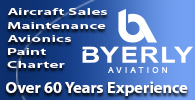When picking up your Twin Commander after an inspection or maintenance from your mechanic, repair station, or Twin Commander Factory Authorized Service Center, tread carefully. Even though professional maintenance organizations have a system of checks and balances in place, a thorough pre-flight is highly recommended. These are the items that require closer scrutiny during your pre-flight.
Post 150 hour/12 month inspection walk around
- Power off exterior checks
- Several inspection panels and components have been removed and reinstalled during the inspection. Be sure to check these panels and components for security and missing fasteners. Grab a ladder!
- Pay particular attention to the security of the belly panels, radome bolt covers and engine cowling; brake calipers and landing gear components for hydraulic leaks; gear doors, bonding strips, trim tabs, antennas, and wheels and wheel bearing covers for security; flight controls free and clear; fuel caps secured; missing or cracked static wicks; windows and windshields for scratches; oxygen bottle valve open; ram air inlet duct clear; emergency air pressure in the green; cabin door and step for proper operation; and emergency exit window flush with fuselage and properly latched with no pinched seal.
- Power on exterior checks
- Check all lights for operation. Don’t forget wing ice lights and landing light operation, and pulse lights if you have them.
- Pull aux hydraulic pump C/B, bleed off pressure to zero, flaps up, check hydraulic reservoir level. Push in pump C/B, set parking brake, check brake caliper adjustors. There should be no disc gaps with the brakes set. Release the parking brake and set flaps to full down. Inspect flap actuating rod ends for proper attachment to flaps. Caution: Flaps may appear to operate correctly even if the actuating rod ends are not attached to flap correctly.
- Run all trims both electrical and manual to max deflection and return to “zero” position. Verify neutral position on flight controls.
- Power on interior checks
- Push in all circuit breakers except for the two buss tie C/Bs. Be advised some of these circuit breakers may be pulled to disable the Hobbs meter, or for ground pressurizing. Push them in.
- Check overhead switches for proper position: battery switch on, buss tie off, control and distribution busses on, all other switches off or normal. Battery voltage 24V or above, use GPU if available.
- Push annunciator “Press to Test” check for burnt out panel lights and missing lens. Then gear horn will also sound when it’s held. Push the power levers up to silence the horn. Also check the gear horn silence button for canceling the horn, and power levers back to flight idle. Momentarily check anti-ice systems for operation. Be advised that windshield heat may not work if the ambient temperature is 100 degrees Fahrenheit or warmer. Check the panel lights for dimming and burnt out bulbs.
- On the lower pilot’s panel turn the bleed air selector switch to normal. Momentarily turn the environmental system to auto and listen for the ground blower. If the ground blower cannot be heard, check that the maintenance switch is in the On position. Turn the pressurization controller to above field elevation and select the rate knob in the middle position. Verify the gear handle is down (very important) with three green lights. Turn on the avionics and check that the instruments spool up with flags pulled. Engage the autopilot and check for operation. If the autopilot does not engage, check the red disconnect switch on the pilot’s yoke.
- Turn off the avionics, release the parking brake, turn on the cabin overhead switch and check the cabin reading and indirect lights, and check the entertainment and other components on the cabin buss. Note that the co-pilot’s windshield wiper and taxi lights are on the cabin buss. Engage the cabin door lock switch, check that the light extinguishes, and that the handle is locked. Turn off the batteries.
- Power off interior checks
- Dial up the oxygen regulator to 20,000 feet, and check cockpit masks for operation. Then dial the regulator to Off and verify that pressure holds. If the pressure drops quickly, there may be a leaky mask, quick-disconnect, or the cabin overhead outlets.
- Check all the seats for security and operation, including seatbelts. Check that the cabin overhead ceiling is securely tucked in middle and side rails and that the aft divan seat backs are secured to aft bulkhead. Verify that the fire extinguisher and emergency window handle are secured.
- Verify the cabinets and drawers for security and proper operation.
This guideline is geared towards the 690A/B, but most items also cross over to the Jetprop models. Performing these checks will help you discover many of the issues found post-maintenance before you fly away.
Twin Commander maintenance expert Rob Louviaux has worked at many Factory Authorized Service Centers, and is currently the Maintenance Director of Bridger Aerospace.




